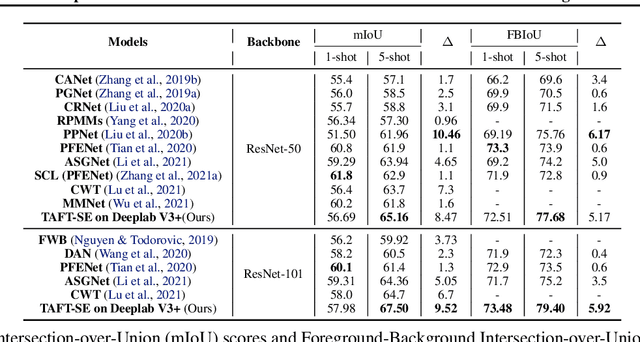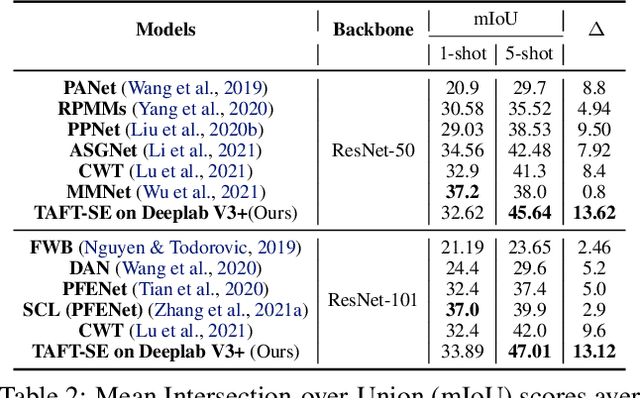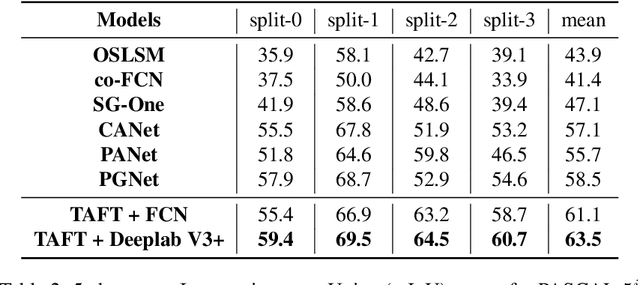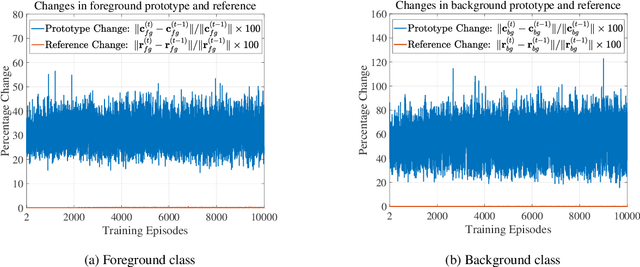Young-Hyun Park
Task-Adaptive Feature Transformer with Semantic Enrichment for Few-Shot Segmentation
Feb 14, 2022



Abstract:Few-shot learning allows machines to classify novel classes using only a few labeled samples. Recently, few-shot segmentation aiming at semantic segmentation on low sample data has also seen great interest. In this paper, we propose a learnable module that can be placed on top of existing segmentation networks for performing few-shot segmentation. This module, called the task-adaptive feature transformer (TAFT), linearly transforms task-specific high-level features to a set of task agnostic features well-suited to conducting few-shot segmentation. The task-conditioned feature transformation allows an effective utilization of the semantic information in novel classes to generate tight segmentation masks. We also propose a semantic enrichment (SE) module that utilizes a pixel-wise attention module for high-level feature and an auxiliary loss from an auxiliary segmentation network conducting the semantic segmentation for all training classes. Experiments on PASCAL-$5^i$ and COCO-$20^i$ datasets confirm that the added modules successfully extend the capability of existing segmentators to yield highly competitive few-shot segmentation performances.
Task-Adaptive Feature Transformer for Few-Shot Segmentation
Oct 22, 2020



Abstract:Few-shot learning allows machines to classify novel classes using only a few labeled samples. Recently, few-shot segmentation aiming at semantic segmentation on low sample data has also seen great interest. In this paper, we propose a learnable module for few-shot segmentation, the task-adaptive feature transformer (TAFT). TAFT linearly transforms task-specific high-level features to a set of task-agnostic features well-suited to the segmentation job. Using this task-conditioned feature transformation, the model is shown to effectively utilize the semantic information in novel classes to generate tight segmentation masks. The proposed TAFT module can be easily plugged into existing semantic segmentation algorithms to achieve few-shot segmentation capability with only a few added parameters. We combine TAFT with Deeplab V3+, a well-known segmentation architecture; experiments on the PASCAL-$5^i$ dataset confirm that this combination successfully adds few-shot learning capability to the segmentation algorithm, achieving the state-of-the-art few-shot segmentation performance in some key representative cases.
CAFENet: Class-Agnostic Few-Shot Edge Detection Network
Mar 18, 2020



Abstract:We tackle a novel few-shot learning challenge, which we call few-shot semantic edge detection, aiming to localize crisp boundaries of novel categories using only a few labeled samples. We also present a Class-Agnostic Few-shot Edge detection Network (CAFENet) based on meta-learning strategy. CAFENet employs a semantic segmentation module in small-scale to compensate for lack of semantic information in edge labels. The predicted segmentation mask is used to generate an attention map to highlight the target object region, and make the decoder module concentrate on that region. We also propose a new regularization method based on multi-split matching. In meta-training, the metric-learning problem with high-dimensional vectors are divided into small subproblems with low-dimensional sub-vectors. Since there is no existing dataset for few-shot semantic edge detection, we construct two new datasets, FSE-1000 and SBD-$5^i$, and evaluate the performance of the proposed CAFENet on them. Extensive simulation results confirm the performance merits of the techniques adopted in CAFENet.
 Add to Chrome
Add to Chrome Add to Firefox
Add to Firefox Add to Edge
Add to Edge